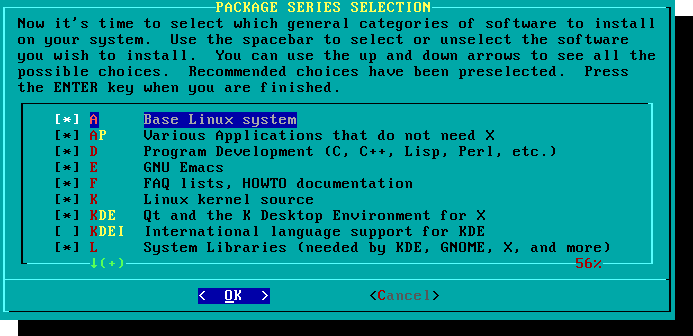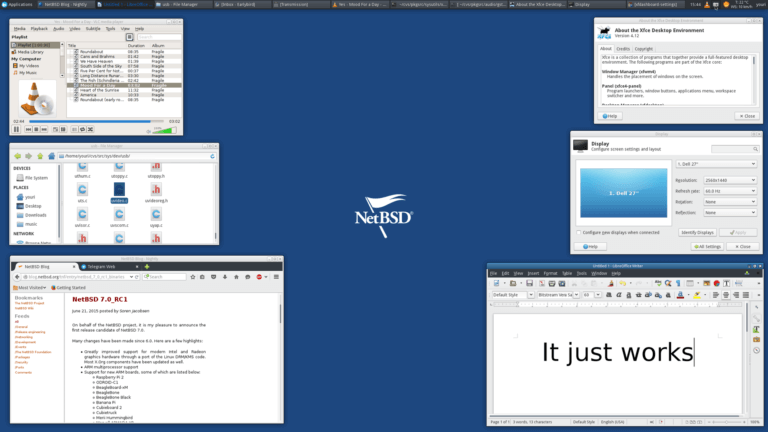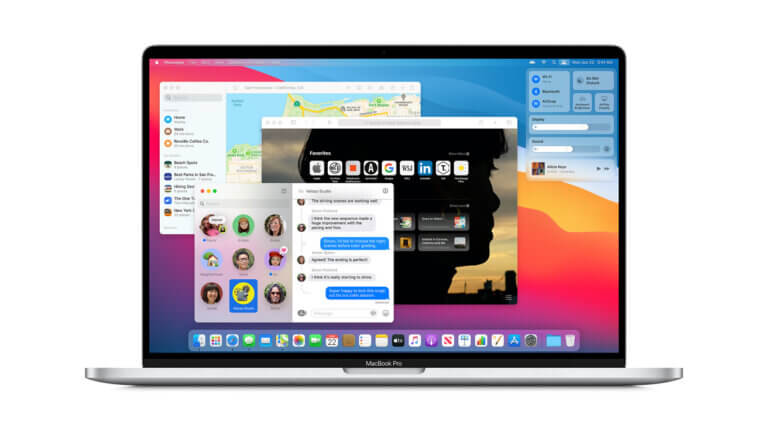Whenever anyone asks me about Macs and PCs, I tell them I’m platform agnostic. I have been using computers for a very long time, having worked on several DOS versions and every Windows version, and I have my favourites along the way, so let’s cover some of those.

Slackware Linux
Linux is an UNIX-like operating system that was created by Linus Torvalds in 1991 and released to the world as a free and open source kernel.
The first Linux distribution (a distribution is the kernel and the tools to make it work as an operating system) was SLS (Soft Landing Systems – German), which was my first experience of installing Linux. I couldn’t read German, so it took me about a week to work out what the different buttons meant through trial and error.
The first English distribution was Slackware, and it has a special place in my heart as I ran all my servers on it when I worked at Demon, along with the desktop machine.
Slackware 96 was a parody release of Slackware because Microsoft had released Windows 95 and so Slackware used FVWM95 as a Window Manager for X-Windows, the graphical interface of the UNIX world.

NetBSD
When I worked at Demon Internet, everyone who worked in operations had to build their own PC, then install a BSD operating system on it. Unfortunately, the ex-Windows PC I was given couldn’t work with any of them, it worked on Linux but Demon were so anti-Linux.
I would say NetBSD was probably my labour of love. These days FreeBSD installs as easily as Linux does and is jam packed with goodies that make you think you could use it instead of Linux. NetBSD however, is much more compact and designed for lower end hardware as well as for servers.
At Demon, you were encouraged to edit the config files and then get BSD to build an entirely custom version of your computer.

Windows 7
Although I use Windows 10 on my PCs and Windows 10 for ARM on my Mac Mini M1 (using Parallels) I preferred Windows 7. A lot of Windows 10 under the hood still uses Windows 7 to do stuff, such as the Control Panel and a lot of the control panel parts are accessible through Windows 10.
It does puzzle me as to why Microsoft didn’t create a new Settings app for everything in Control Panel rather than rely on it so heavily. Maybe in Windows 11, it will move away from that, but I doubt it.

Mac OS Big Sur
Big Sur is the latest Mac OS version, 11 and it integrates well with my iPhone, as I can run some of my apps on my Mac Mini. One of the advantages of OSX and Big Sur is that the interface has hardly changed between versions, that and the interface is calming and it has Terminal, which is excellent for working on servers.
As of OSX, the operating system that the Mac runs on is an Apple variant of BSD UNIX.
I started using System 7.5 on an Apple Mac IIvx that we had in the office of Web Ltd where I worked in tech support, the same place as where I learnt Linux. System 7.5 was the first version that was built with networking through MacTCP, but it was available for System 7.1 as an upgrade.

Platform Agnostic
This phrase basically means you can work on all platforms and feel at home with all of them. My work PC is Windows, the Mac runs both Mac OS and Parallels which runs both Ubuntu and Windows for ARM. I have a Raspberry Pi that runs Raspbian Linux and a couple of network drives that run Armbian Linux.
My server runs CentOS and when I did work for a CIC, I used to install Linux Mint because it looks like Windows for people coming from a Windows background.


